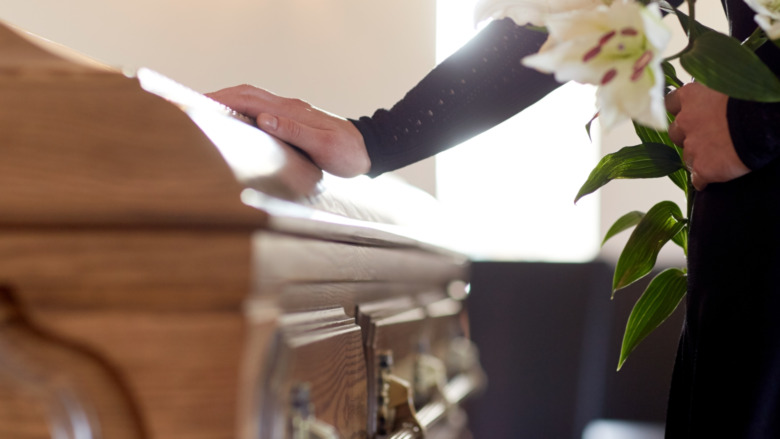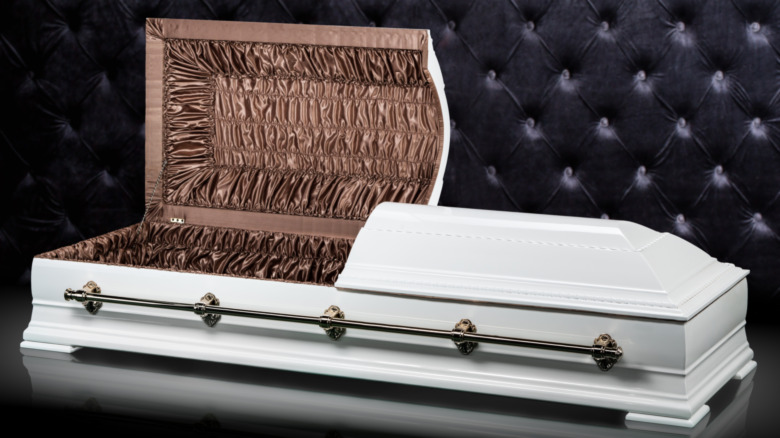Here's What Happens To A Body When It's Embalmed
The natural process of decay isn't just a roadblock for researchers trying to learn about the world and its inhabitants from the remains of the past. It can also make it impossible for families to properly grieve their loved ones. While corpses can sometimes be preserved naturally thanks to the growth of "corpse wax" — adipocere — the most common method used for preservation of the dead is embalming.
Per Mosaic Science, the earliest origins of embalming have been traced to the ancient Egyptians, who developed the technique after the tombs they created for their dead proved inadequate for curbing decomposition. Before embalming, the Nile Valley inhabitants buried dead bodies in the sand, far from the reach of insects, in the blaze of a desert heat that fought off the microbes that drive decomposition.
Egyptian embalming took things a step further by filling the body with compounds that put a halt to the natural processes that drive decay. Although the Egyptians did and continue to use natron, a naturally occurring sodium mixture, as their embalming agent, modern processes use solvents like formaldehyde and methanol.
Embalming has evolved from its ancient origins
Just as the ancient Egyptians did in years past, modern embalmers prepare by washing the corpse. According to Legacy, the next step is shaving the face and setting facial features into the desired position. From here, the process truly begins, although the exact techniques will vary, depending on the situation.
The modern embalming process begins with arterial embalming. The body's blood is flushed out as embalming fluid is simultaneously funneled into the body's arteries and makes its way through the vast network of veins. When the blood has been thoroughly replaced, the next possible step is cavity embalming.
Cavity embalming is typically only used on bodies that have not undergone an autopsy. While ancient Egyptians removed all internal organs and filled the corpses with natron, modern embalming does not necessarily require the removal of these bodily structures. But if organs are removed via autopsy, they are ultimately returned to the body in plastic coverings or incinerated. Regardless, the process of cavity embalming is typically not needed.
When cavity embalming is required, a trocar — an instrument that's essentially a tube with a pointed end — is used to puncture the surface of hollow organs and remove their internal fluids with an embalming compound. Afterward, the resulting cavity spaces are filled with embalming fluid by pumping the substance into the torso.

